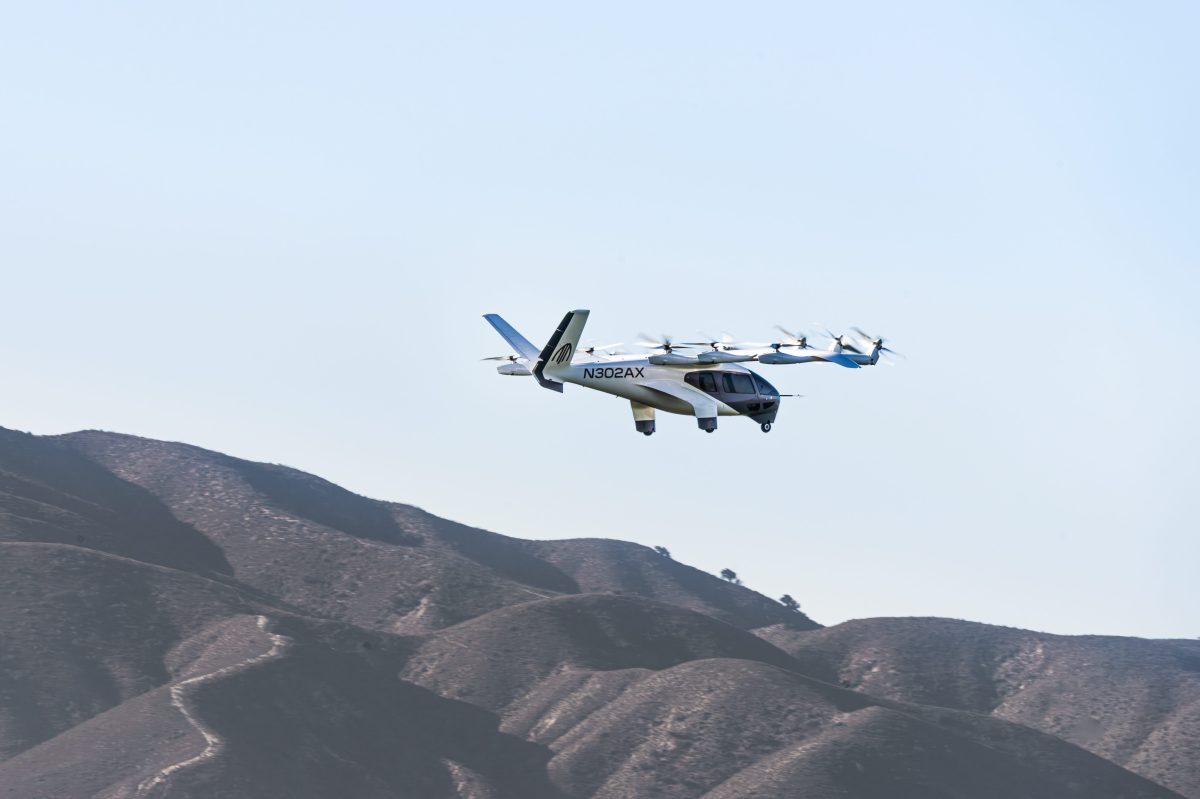The mountains and earthquakes that stand in the way of California's high-speed dreams
Skift Take
Civil War veteran William Hood arrived at the mosquito-infested swamps near Bakersfield in 1874 to build a rail line that would soar through the Tehachapi Mountains, linking the Bay Area and Southern California for the first time.
Hood, Southern Pacific Railroad's chief assistant engineer, assembled 3,000 Chinese immigrants with picks, shovels and dynamite. They snaked the track up treacherous mountain ridges, twisted it back and forth around canyons and punched it through sheer rock in a series of 18 tunnels -- climbing 4,025 vertical feet along the way.
It's a feat no one has attempted to duplicate. Until now.
A plan as audacious in the 21st century as Hood's was in the 19th century is taking shape on the drawing boards of California's bullet train planners. The crossing of not only the Tehachapi Mountains but the San Gabriel Mountains is seizing the imagination of engineers who see it as the greatest design challenge of the $68-billion project.
"It is the project of the century," said UC Berkeley civil engineering professor Bill Ibbs, who has worked on other high-speed rail systems around the world.
The sheer scale and scope of the bullet train's push into Southern California, including traversing complex seismic hazards, would rival construction of the state's massive freeway system, water transport networks and its port complexes. It is likely to be viewed in future decades as an engineering marvel -- or a costly folly. If nothing else, it is ambitious.
The plan calls for bullet trains to shoot east from Bakersfield at 220 mph, climbing one of the steepest sustained high-speed rail inclines in the world. It would soar over canyons on viaducts as high as a 33-story skyscraper. The line would duck in and out of tunnels up to 500 feet below the rugged surface. It would cross more than half a dozen earthquake faults heading toward L.A.
Tunneling machines as long as a football field will have to be jockeyed into mountain canyons to do the heavy, back-breaking work once left to Chinese laborers. New access roads and a corridor for high-voltage power lines will have to be carved through the Tehachapis to feed power-hungry trains. When completed and fully operational, the bullet train will need an estimated 2.7 million kilowatt hours of electricity each day -- about a quarter of Hoover Dam's average daily output.
Descending the Tehachapis, the trains will barrel through miles of creosote and sagebrush across the oven-hot Mojave Desert, and cut through neighborhoods of homes, churches, schools and businesses, some of which will have to be flattened. It will kiss the boundary of a top-secret Lockheed Martin aerospace plant and sail alongside a Disney movie lot in Santa Clarita.
Reaching the San Fernando Valley, it will pass through an industrial corridor before dipping underground near Glendale and running deep beneath the Los Angeles River. It will most likely pop up in Chinatown, where some of Hood's laborers settled.
One measure of the topographic challenge: Over that 141 miles from Bakersfield to Los Angeles, up to 59% of the track would run in tunnels or on viaducts, according to preliminary planning documents.
If completed as planned, it would close a gap in the state's rail network. Passenger service through the Tehachapis was discontinued in 1971. Today, Amtrak passengers have to take a bus from downtown Los Angeles to Bakersfield to catch northbound trains.
Closing that gap is expected to yield a big payoff in ridership and passenger convenience. Planning for the challenge posed by Southern California's mountain ranges already has begun, and officials hope construction can follow work on the first 130 miles of bullet train track in the Central Valley, where a groundbreaking is expected next year.
C. Michael Gillam, a vice president at engineering company Parsons Brinckerhoff who is overseeing the project's Southern California design, said he was "very confident about our ability to do this." A veteran of bullet train projects in China and Taiwan, Gillam has a staff of about 200 working on the Bakersfield-to-Los Angles segment, and his team will begin plotting the exact route next year, when detailed environmental impact reports are scheduled to be released. It will roughly parallel Hood's route.
Despite Gillam's confidence, a lot could go wrong that would spike the cost. At this point, the rail authority estimates it will cost about $7.7 billion to build the 83 miles of rail from Bakersfield to Palmdale and about $12.5 billion to build the 58 miles of rail from Palmdale to Union Station.
The price tags partly reflect the need for speed. Northbound bullet trains are supposed to accelerate to close to their top 220 mph speed as they pull out of Union Station. They will have to maintain that pace all the way to San Jose to fulfill a legal mandate that trains reach San Francisco in less than two hours and 40 minutes.
At that speed, turns must be gentle, avoiding the radical twists and turns of Hood's creation -- including the famous Tehachapi Loop, a giant circle of track that ascends 77 feet around a hill. Union Pacific's locomotive engineers have to slow to just 23 mph in many places.
The high-speed rail authority envisions a much straighter route. Depending on the slope of the track, the tallest viaduct could be 200 to 330 feet off the ground.
The same holds true for the segment through the San Gabriel Mountains, roughly following California 14. The current tracks, also constructed by Southern Pacific in the 1870s but now owned by the Metropolitan Transportation Authority, twist and turn too much for bullet trains. A more direct route would include an 8-mile-long tunnel under the canyons of Santa Clarita.
Where the bullet train enters the Los Angeles Basin, tracks would run next to Metrolink's existing northeast San Fernando Valley route, requiring the removal of some businesses and possibly homes.
While large by Southern California standards, the planned structures and tunnels won't set any world records. Switzerland is building a 35.4-mile rail tunnel under the Alps. And China has a highway bridge 1,627 feet high.
California's bullet train will have to operate over some of the nation's most seismically active terrain, and Gillam acknowledges that big quakes could cause a derailment.
There are half a dozen faults between Bakersfield and Los Angeles, including the White Wolf and San Andreas, both capable of producing a 7.5 magnitude quake. Where high viaducts are near faults, engineers are considering reinforced concrete structures that would resist ground motion and have containment features to prevent a derailed bullet train from plunging to the ground, Gillam said.
The problem involves more than just shaking. Where the rail line would cross the San Andreas fault near Palmdale, for example, an earthquake could leave rails laterally separated by 20 feet. A sophisticated shut-down system would slow trains in minor quakes and activate an emergency stop in major quakes. At full speed, however, a bullet train would need four to five miles to make an emergency stop on level ground, and longer going downhill.
The probability of an earthquake occurring as a train is going over a fault is "very small," Gillam said. Some experts, however, say the probability is not inconsequential, considering high-speed trains are expected to be running as frequently as every five minutes in each direction.
Stephen Mahin, director of the Pacific Earthquake Engineering Research Center at UC Berkeley, said the bullet train's operating plan suggests a "strong probability" that a train could be going over a fault if it ruptures. But good engineering can reduce the risks.
"It is not that it can't be done," he said.
(c)2012 the Los Angeles Times. Visit the Los Angeles Times at www.latimes.com. Distributed by MCT Information Services.
![]()




